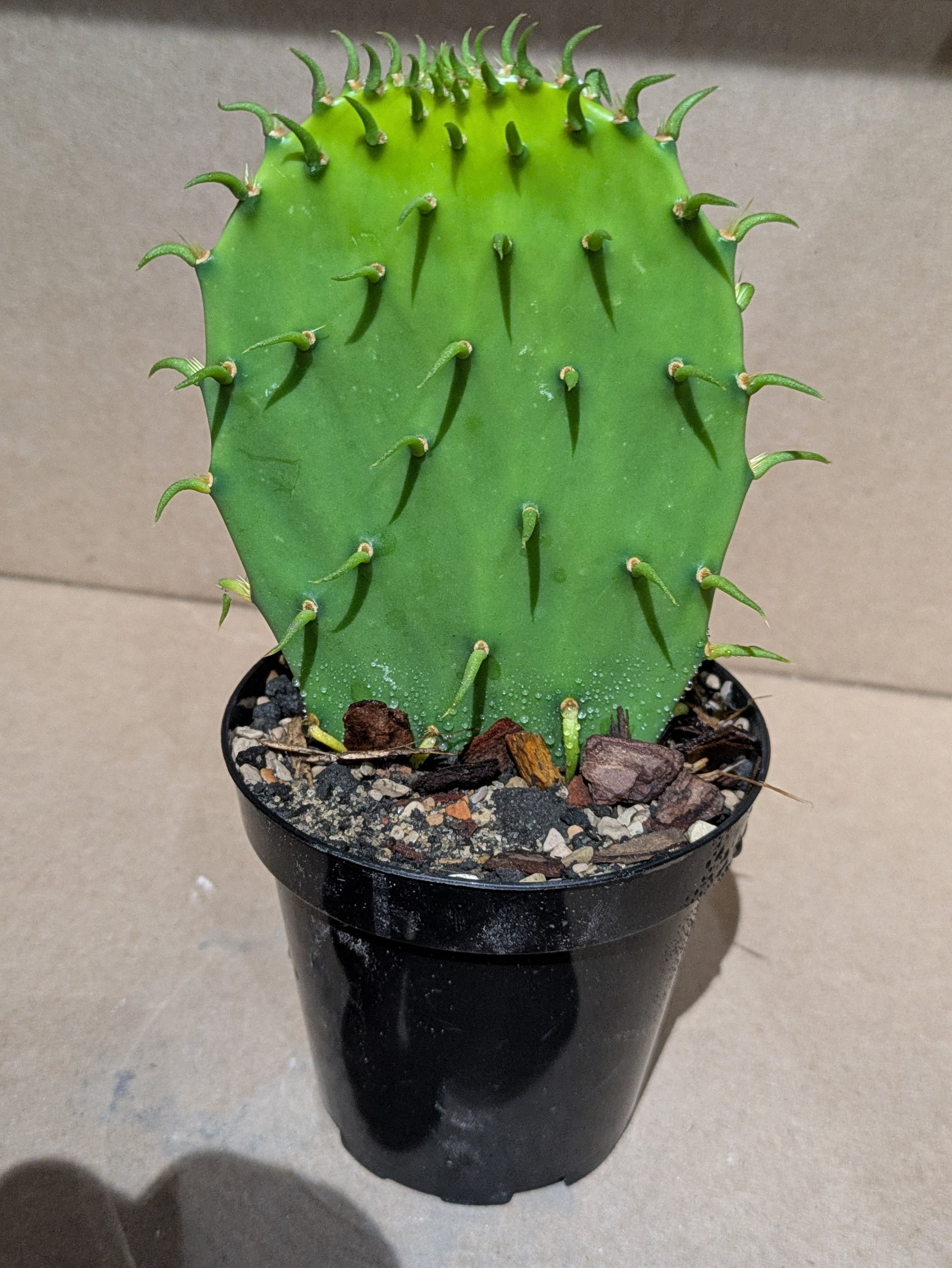 Image 1 of 7
Image 1 of 7

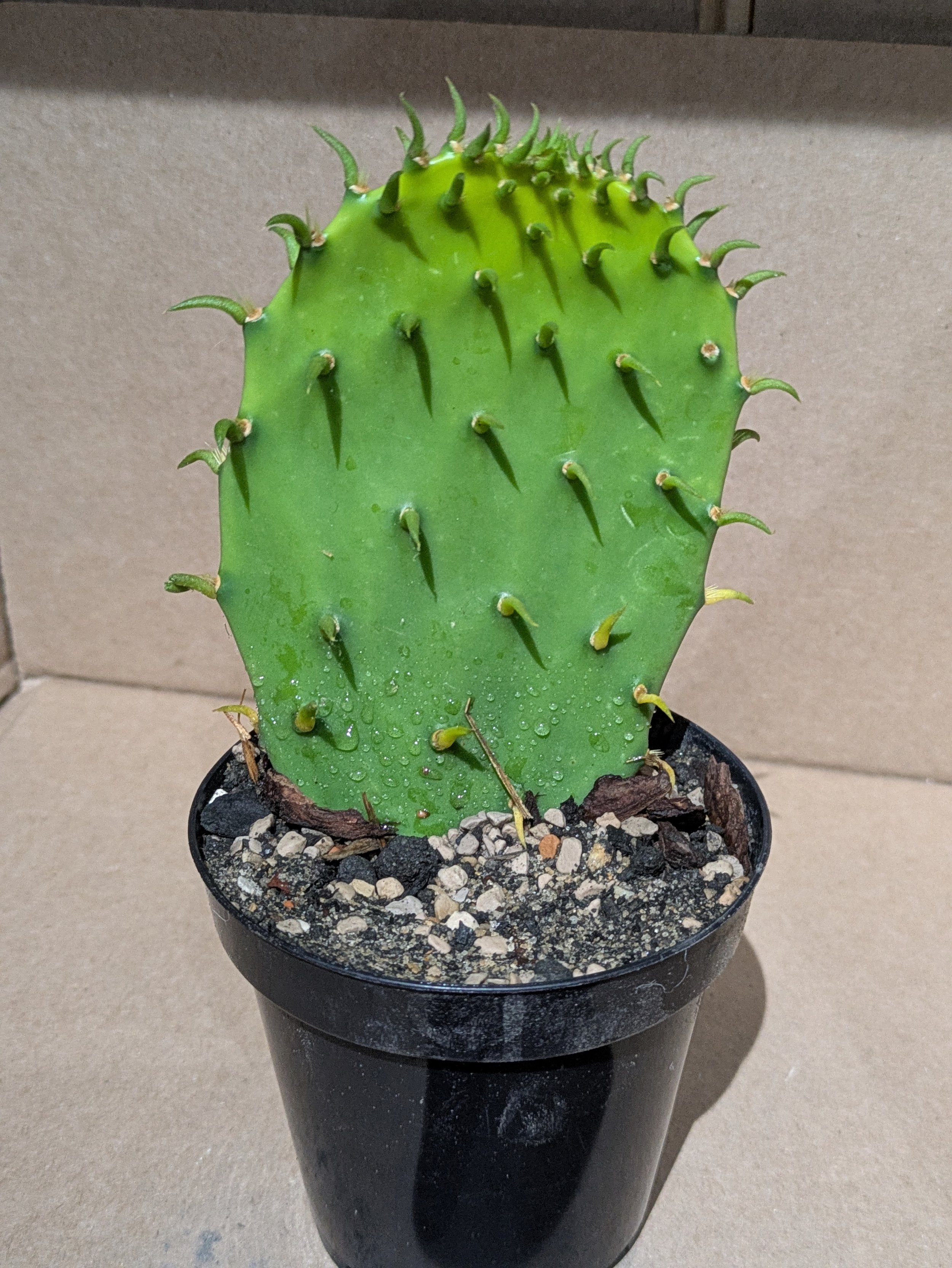 Image 2 of 7
Image 2 of 7

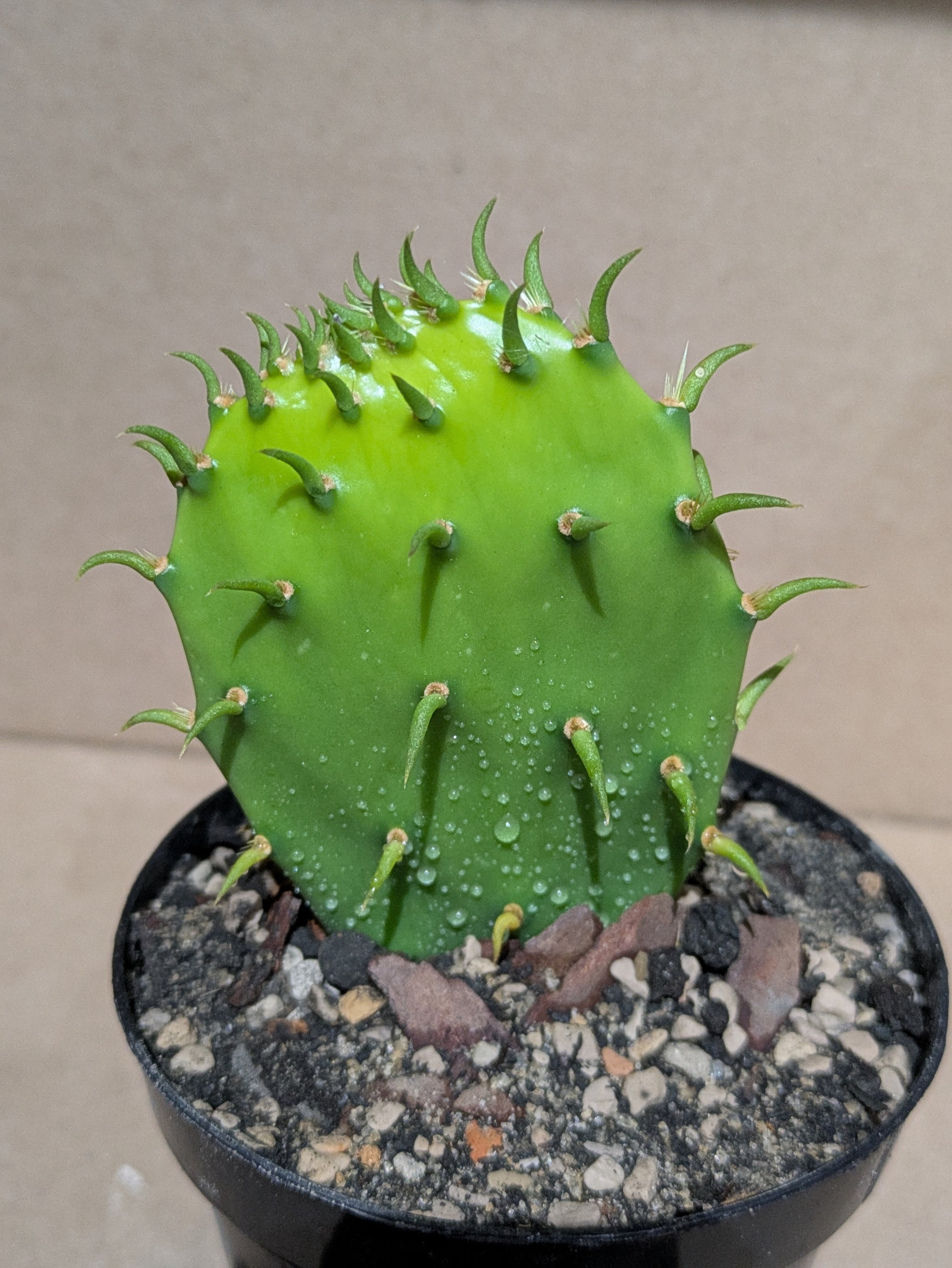 Image 3 of 7
Image 3 of 7

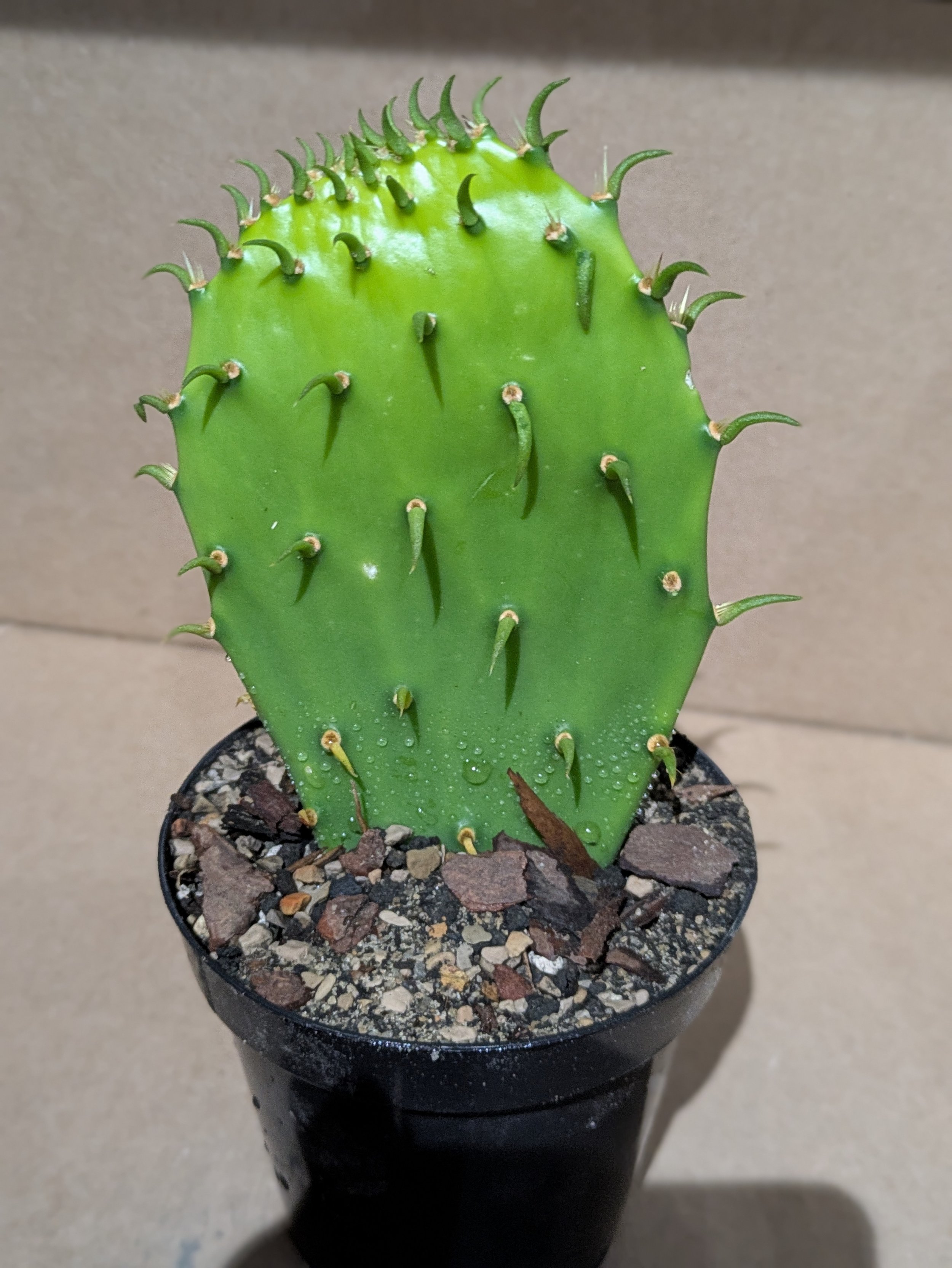 Image 4 of 7
Image 4 of 7

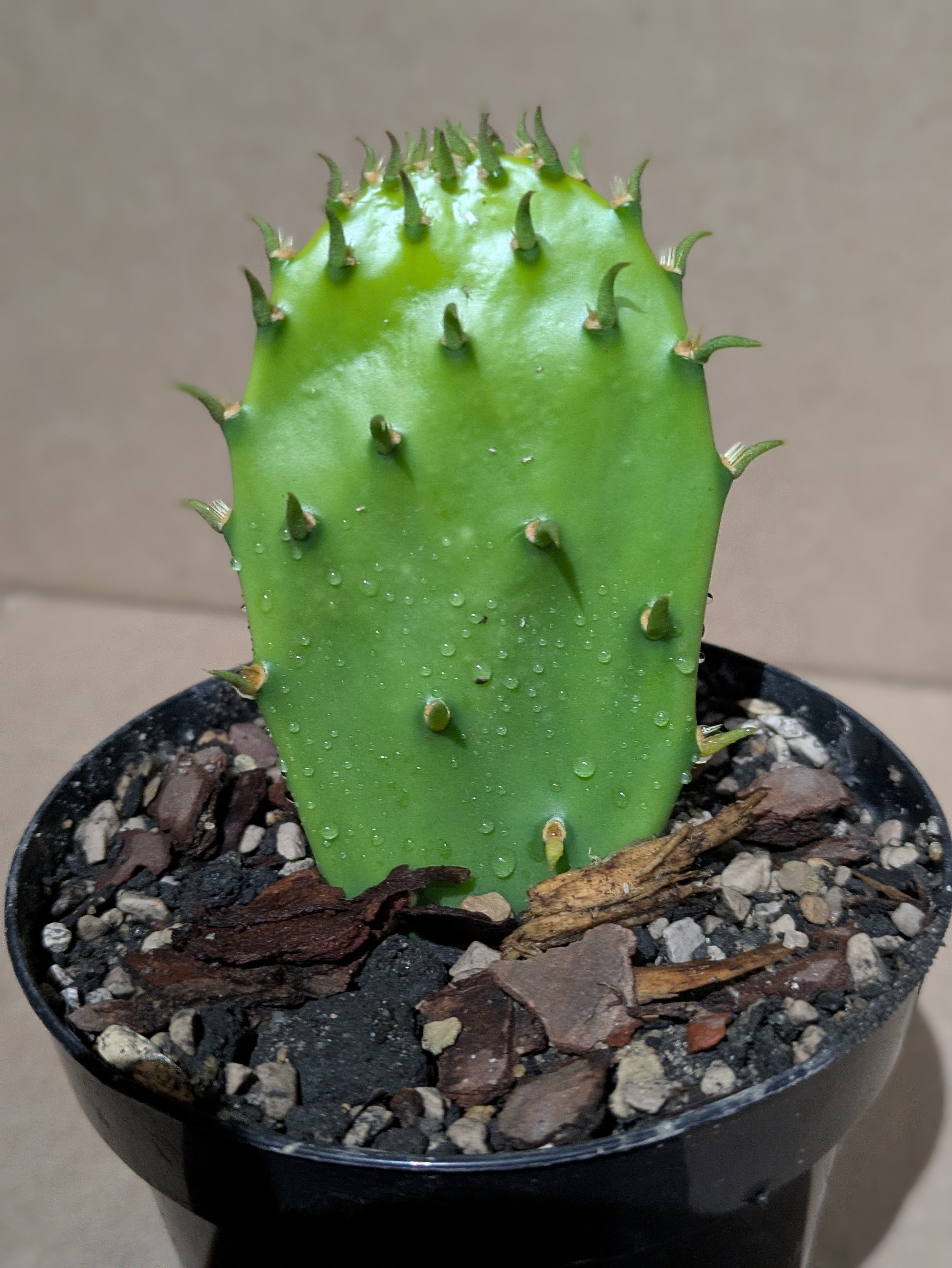 Image 5 of 7
Image 5 of 7

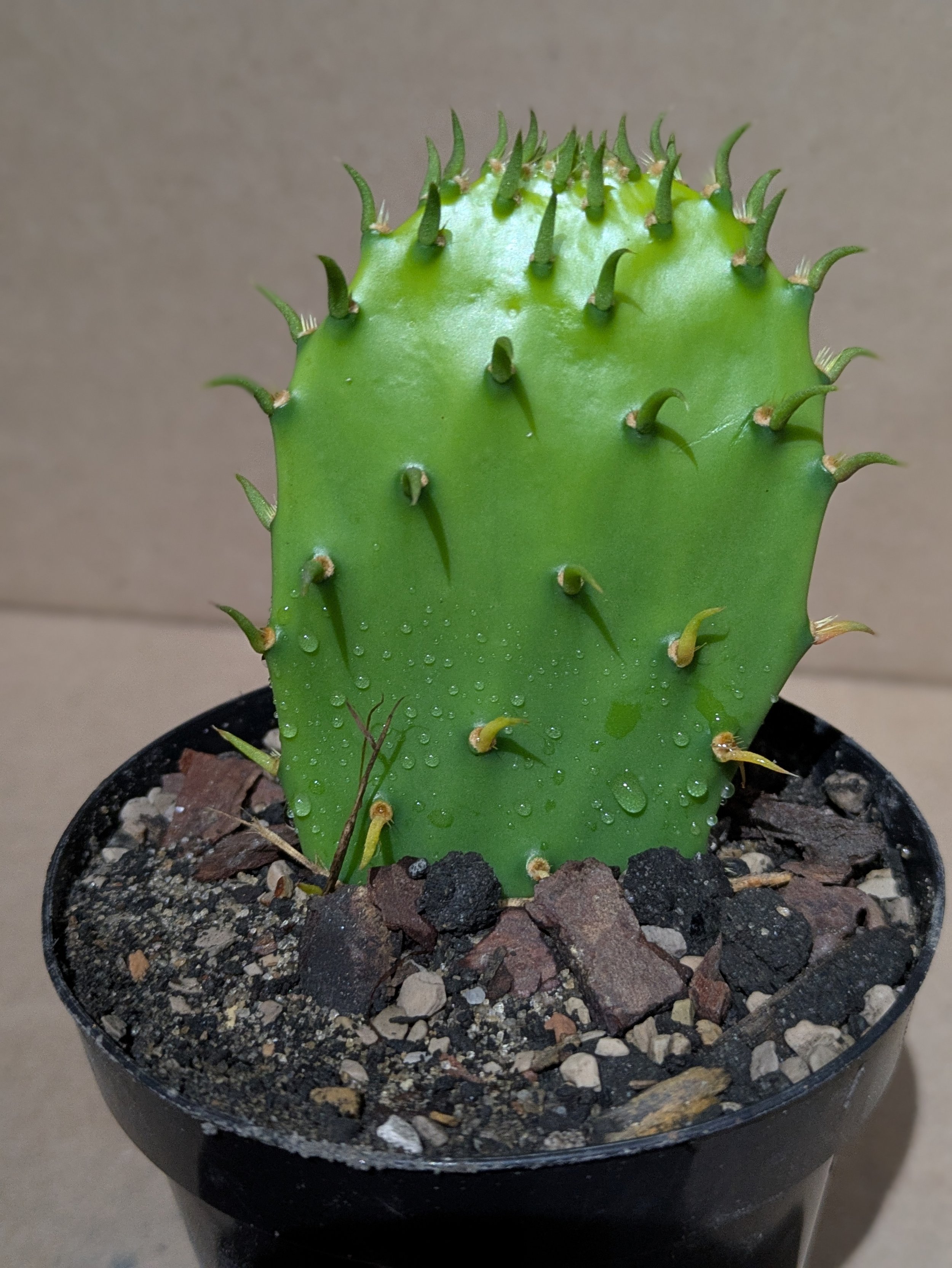 Image 6 of 7
Image 6 of 7

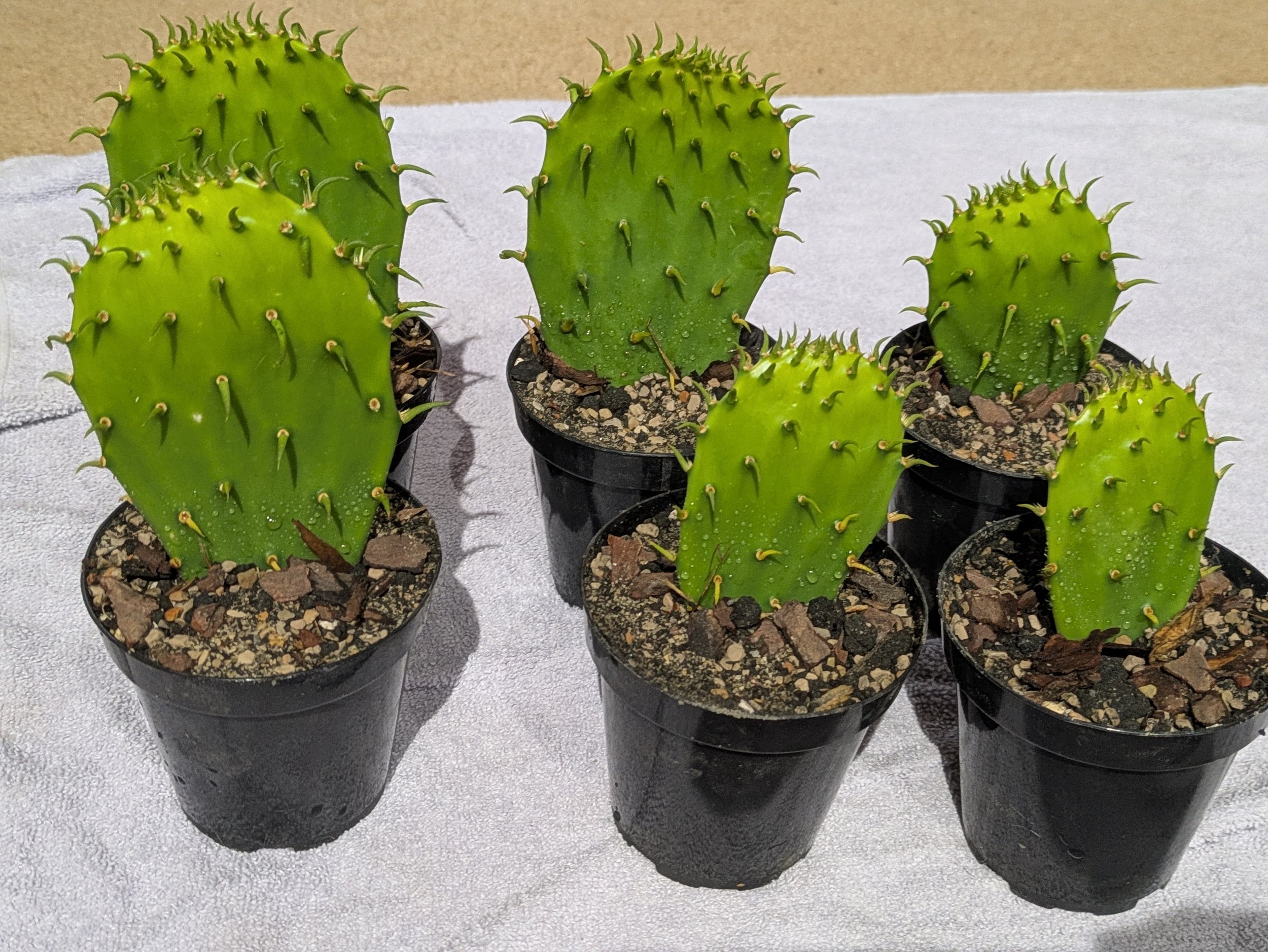 Image 7 of 7
Image 7 of 7








Rick's Grand Pricks - Potted
The grand kids of Rick! Opuntia stricta. These pads are cuttings from the children of Rick.
Opuntia stricta, commonly known as the erect prickly pear or nopal estricto, is a robust and adaptable cactus species native to the subtropical and tropical coastal regions of the Americas. This plant is characterized by its flattened, bluish-green stem segments (cladodes) that can grow up to 25 cm long and are often sparsely spined with stout, yellowish needles and fine glochids.
In the spring and summer, Opuntia stricta produces attractive, lemon-yellow flowers. These are followed by edible, purplish-red, pear-shaped fruits that are typically 4-6 cm in length. The fruit has a smooth, spineless exterior (except for small areoles with glochids) and a deep purple, sour-tasting pulp containing numerous seeds.
Opuntia stricta is valued for a variety of uses:
Edible Fruits and Pads: The fruits are consumed fresh or processed into jams and drinks. The young cladodes ("nopalitos") are also edible and used as a vegetable.
Ornamental Plant: Its unique appearance and relatively low maintenance make it a popular choice for landscaping, especially in arid and coastal environments.
Potential Health Benefits: Research suggests that Opuntia stricta and its components are rich in bioactive compounds, including betalains and phenolic compounds, which exhibit antioxidant and anti-inflammatory properties.
Ecological Importance: In its native range, it plays a role in coastal ecosystems and can tolerate challenging conditions like drought, high salinity, and sandy soils.
The grand kids of Rick! Opuntia stricta. These pads are cuttings from the children of Rick.
Opuntia stricta, commonly known as the erect prickly pear or nopal estricto, is a robust and adaptable cactus species native to the subtropical and tropical coastal regions of the Americas. This plant is characterized by its flattened, bluish-green stem segments (cladodes) that can grow up to 25 cm long and are often sparsely spined with stout, yellowish needles and fine glochids.
In the spring and summer, Opuntia stricta produces attractive, lemon-yellow flowers. These are followed by edible, purplish-red, pear-shaped fruits that are typically 4-6 cm in length. The fruit has a smooth, spineless exterior (except for small areoles with glochids) and a deep purple, sour-tasting pulp containing numerous seeds.
Opuntia stricta is valued for a variety of uses:
Edible Fruits and Pads: The fruits are consumed fresh or processed into jams and drinks. The young cladodes ("nopalitos") are also edible and used as a vegetable.
Ornamental Plant: Its unique appearance and relatively low maintenance make it a popular choice for landscaping, especially in arid and coastal environments.
Potential Health Benefits: Research suggests that Opuntia stricta and its components are rich in bioactive compounds, including betalains and phenolic compounds, which exhibit antioxidant and anti-inflammatory properties.
Ecological Importance: In its native range, it plays a role in coastal ecosystems and can tolerate challenging conditions like drought, high salinity, and sandy soils.
